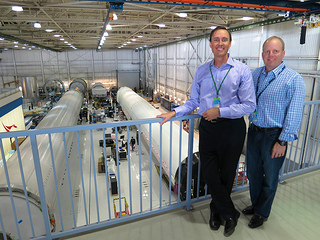Are Procurement Initiatives the Key to Closing the Gender Gap?

For years, international organizations such as the World Economic Forum, the World Bank, and the United Nations have advocated for gender equality, using research and annual reports to demonstrate the positive correlation among gender equality, gross domestic product (GDP), and competitiveness. While the gender gap remains large in American supply chains, a new report regarding Women in Supply Chain reveals some positive developments. Find out why procurement could be the key to closing the gender gap and why executive action is necessary for substantial change.
Women Are Slowly Closing the Supply Chain Gender Gap
One of the most positive takeaways from the 2017 Women in Supply Chain Survey is that overall, supply chains are making progress toward closing the gender gap. The 2017 survey, which research organization Gartner conducted in partnership with AWESOME, a group for female executive leadership, reveals that women make up about 37 percent of the total supply chain workforce, which is up 2 percent from 2016. While the percentage of female directors and vice presidents has decreased slightly over the past year, the percentage of female senior vice presidents has more than doubled.
In 2017, women gained the most ground in the consumer value chain, followed closely by the health care value chain and the service sector value chain. Though women don’t yet represent as high a percentage of the total workforce in the industrial value chain, that may soon change. The industrial sector is the only one to report that the majority of supply chains have at least general gender diversity objectives.
Executive Action and Firm-Wide Policies Are Necessary for Change
Another important takeaway from the Women in Supply Chain survey is that gender gaps are unlikely to resolve independently. Instead, executive actions and specific policies are necessary to exact diversity-related changes.
The survey recommends that supply chains find innovative ways to leverage existing networks of both current and aspiring female business leaders. This could involve establishing in-house networking groups for women or offering leadership training to female employees. These initiatives may also involve enhancing pipeline planning to increase the number of female job applicants and improve the quality of candidates. Creating a stronger pipeline can also help firms develop relationships with local colleges and universities as well as establish themselves in communities.
Procurement Could Be the Key to Empowering Female Business Leaders
The Power of Procurement, a recent report from UN Women, echoes the importance of women in the supply chain and offers an innovative solution for closing the gender gap. The publication highlights the fact that just 1 percent of corporate spending goes to women-owned businesses around the world every year, but that integrating these businesses into corporate supply chains can positively impact the global economy and create millions of jobs. Choosing the best value when assessing bidders and streamlining the supplier application process can help organizations improve their rate of sourcing from women-owned businesses.
Women’s roles in the supply chain may be expanding, but only through corporate policy changes and executive actions can the gender gap truly be closed. Corporations with an aim to boost their bottom line and increase their ability to compete should consider dedicating resources to making some of these recommended changes.








